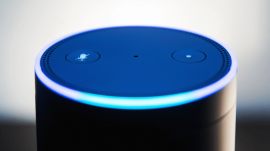Adobe: 47% of smart speaker owners using device in shopping process


After a dozen or so consumer surveys about smart speakers in the past year, we’re getting a good sense of how they’re being used. The latest of these, out yesterday, is from Adobe. And it supports the narrative that smart speakers are an important, emerging commerce channel.
Adobe surveyed 1,000 US consumers, both owners and non-owners of smart speakers. Men were somewhat more likely to be owners of these devices than women, and younger adults were more likely to own them as well.
The study found that 32 percent of respondents owned at least one smart speaker, up from 28 percent in January. It also projected, based on survey responses, that about 48 percent of US consumers would own a smart speaker after the holidays. If those numbers can be extrapolated to the entire US adult population, it could mean 120 million people with smart speakers in their homes on January 1, 2019.

The hierarchy of use cases discovered is similar to what we’ve seen in the other surveys:
- Listen to music — 70 percent.
- Weather forecast — 64 percent.
- Asking fun questions — 53 percent.
- Online search — 47 percent.
- Checking the news — 46 percent.
- Alarms/reminders — 46 percent.
- Basic research — 35 percent.
- Asking directions — 34 percent.
Among a set of “emerging” smart speaker activities were the following:
- Making calls — 36 percent.
- Smart home commands — 31 percent.
- Shopping/ordering items — 30 percent.
- Food delivery/takeout — 17 percent.
- Flight/hotel research — 16 percent.
It’s not entirely clear from the press and research materials whether respondents understood they were answering questions about smart speaker activity exclusively. It’s possible that some could have generalized to voice assistants on smartphones. The reason I speculate about this is because 36 percent of smart speaker owners saying they are making calls through these devices sounds high. They might have tried it, but is this is a regular activity for those smart speaker owners?
Adobe takes a very bullish view of these devices as a shopping tool. Numerous prior surveys reported consumers were buying products through their smart speakers in large numbers. However, that was all called into question last month when a report based on information gleaned from Amazon “internal documents” suggested that voice-based commerce was almost non-existent and that only about 2 percent of Echo owners had purchased anything directly through their smart speakers this year.
Adobe expands the aperture of commerce a bit by asking about a broader category of shopping-related behaviors:
Voice in the Shopping Journey

Adobe argues that even if people aren’t buying directly in large numbers, smart speakers are becoming an important channel in the purchase journey. That may be true over time, and marketers should think about smart speakers as an important new search and product discovery tool for consumers.
Yet the online surveys appear to paint a more active and bullish picture of smart speaker usage than what may actually be happening “offline” — today at least.
The post Adobe: 47% of smart speaker owners using device in shopping process appeared first on Marketing Land.
From our sponsors: Adobe: 47% of smart speaker owners using device in shopping process



